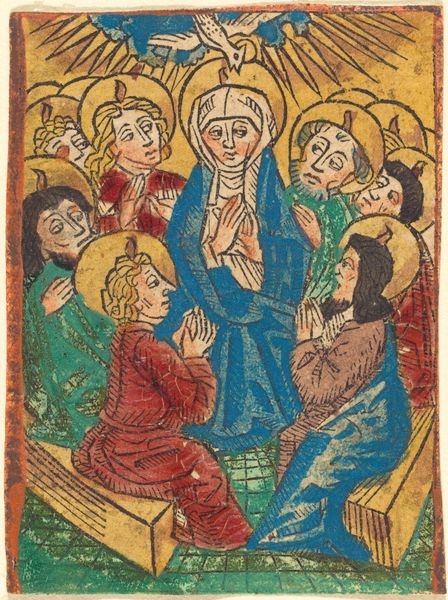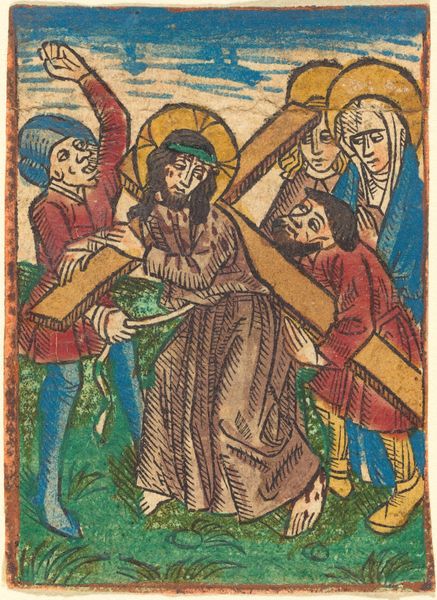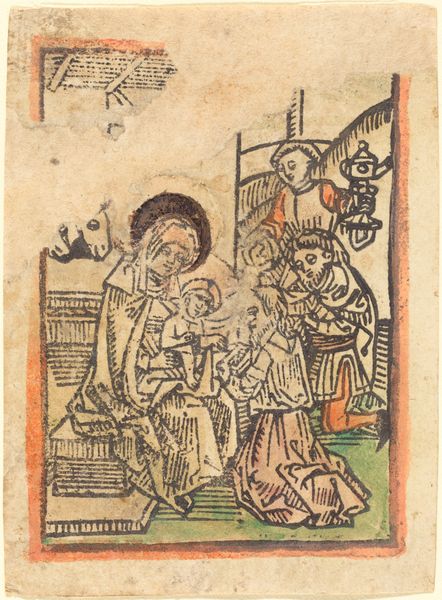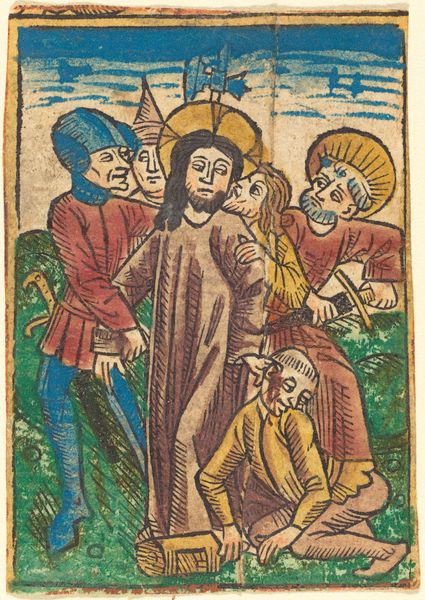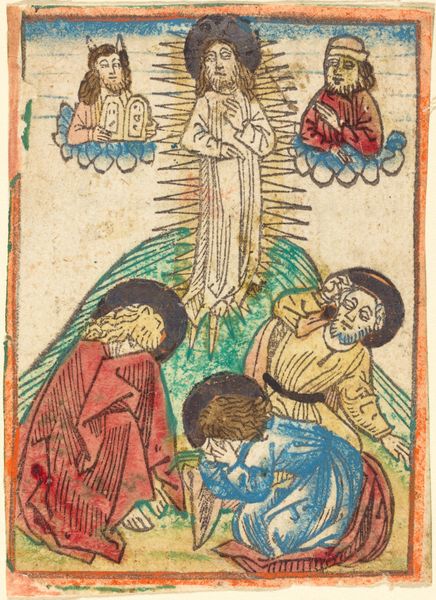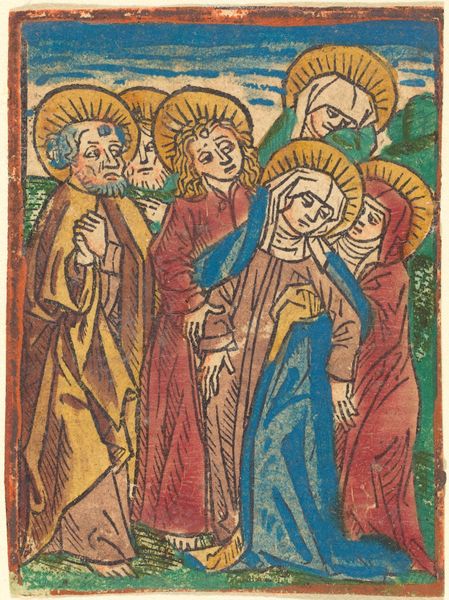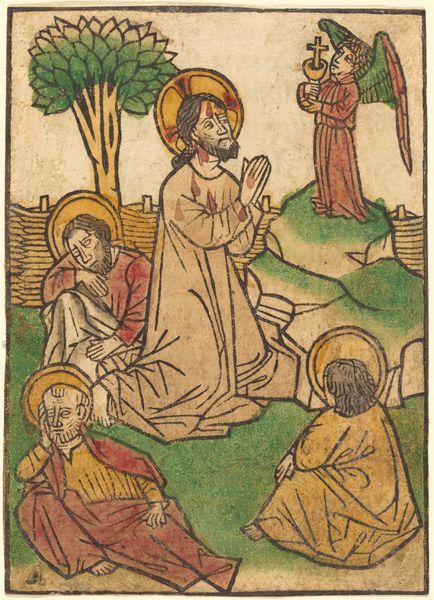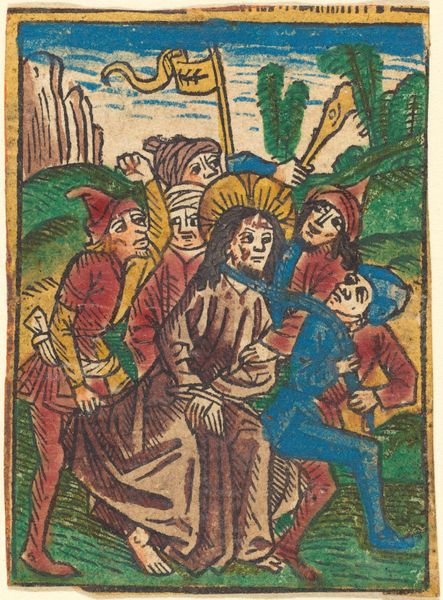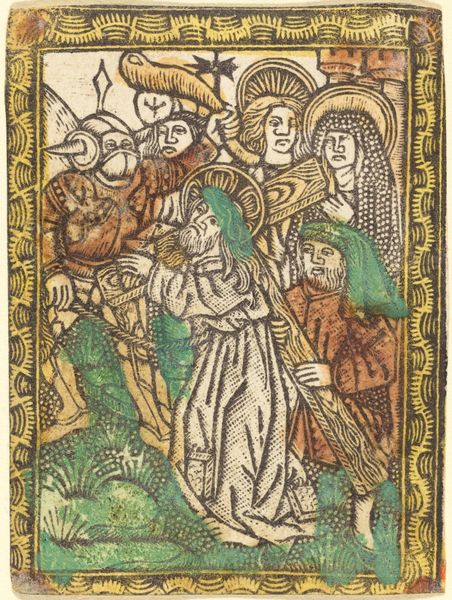
print, woodcut
#
medieval
#
narrative-art
# print
#
figuration
#
woodcut
Copyright: National Gallery of Art: CC0 1.0
Editor: This vibrant, yet diminutive woodcut, "Christ Washing the Apostles' Feet," dating back to around 1480, immediately strikes me with its captivating storybook quality. The almost cartoonish figures and the flatness of the image feel both medieval and somehow surprisingly modern. What cultural meanings might be embedded in its visual language? Curator: The power of images in this period lay in their immediate legibility and moral instruction. Notice the carefully chosen scene. Christ, kneeling humbly, performing an act of service typically done by the lowliest of servants. This image, repeated throughout the late medieval period, underscores not merely piety but a social inversion that was deeply provocative. Do you see how the artist conveys the weight of this act? Editor: It's the expressions, perhaps? Some apostles seem almost disturbed, averting their eyes. The halos seem like silent spotlights of spiritual meaning. But is there more beyond the immediate religious context? Curator: Absolutely. Consider the context. Printed images, especially woodcuts, became a crucial medium for disseminating ideas, especially religious ones. They were cheap, reproducible, and thus extraordinarily influential. Each gesture, each glance, each colour, is imbued with symbolic intent meant to reinforce a very specific message of humility, leadership through service, and the inherent disruption of divine love within the existing social order. What memories do such gestures evoke for you? Editor: The action seems like radical egalitarianism – that everyone can be elevated or diminished in standing at any moment based on their actions. I now better understand its powerful messaging capability. Curator: Precisely. Visual culture is not passive; it actively shapes beliefs and behaviours by appealing to cultural memory. Editor: Thank you. Now when I look at this image, I will consider it less of a simple illustration, but more as a deliberate act of communication designed to profoundly shift understanding of its viewers and its contemporary social structures.
Comments
No comments
Be the first to comment and join the conversation on the ultimate creative platform.
